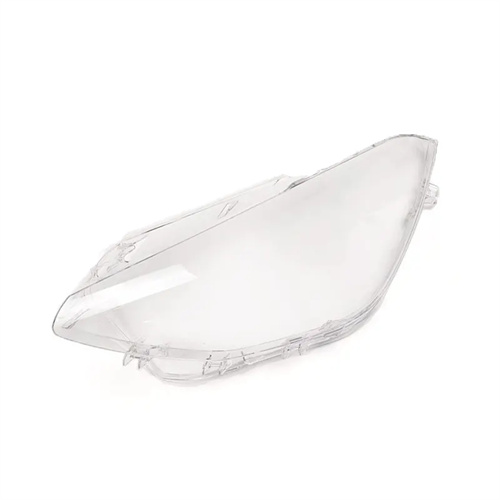Plastic performance
The performance of plastics refers to the various properties exhibited during use, directly impacting the applicability, reliability, and lifespan of plastic products. These properties include mechanical, thermal, chemical, electrical, and optical properties. Different plastics exhibit variations in these properties, enabling them to meet diverse application requirements. Understanding the performance of plastics is crucial for selecting appropriate plastic materials, designing plastic products, and ensuring product quality.

Mechanical properties are among the most fundamental and important properties of plastics, primarily including strength, hardness, toughness, elasticity, and wear resistance. Strength refers to a plastic’s ability to resist external forces, including tensile strength, flexural strength, and impact strength. Tensile strength is the maximum stress a plastic can withstand when breaking under tensile force. Polyamide, for example, has a high tensile strength, making it suitable for parts subjected to tension. Impact strength refers to a plastic’s ability to withstand shock loads. ABS plastic has good impact strength and is often used in parts susceptible to impact, such as housings. Hardness refers to a plastic’s ability to resist pressure from other objects. Polystyrene, with its high hardness, is suitable for parts requiring a hard surface. Tough plastics resist breaking under external forces. For example, polyethylene has excellent toughness, making it suitable for films and hoses. Wear resistance refers to a plastic’s ability to resist wear due to friction. Polyamide, with its excellent wear resistance, is often used in bearings, gears, and other wear-prone parts.

Thermal properties are important indicators that measure a plastic’s performance under temperature fluctuations. These include heat resistance, cold resistance, heat deformation temperature (HDT), and coefficient of linear expansion. Heat resistance refers to a plastic’s ability to maintain its physical and mechanical properties in high-temperature environments. Heat resistance varies significantly among different plastics. Polytetrafluoroethylene (PTFE) can withstand long-term use at temperatures exceeding 260°C, while polyethylene begins to soften at around 80°C. Cold resistance refers to a plastic’s ability to maintain its toughness and strength in low-temperature environments. Polypropylene exhibits poor cold resistance and tends to become brittle at low temperatures, while polyethylene exhibits better cold resistance and can be used below -40°C. Heat deformation temperature (HDT) is the temperature at which a plastic begins to deform under a certain load and is a key parameter for measuring its heat resistance. Polycarbonate has a high HDT, making it suitable for parts used at higher temperatures. The coefficient of linear expansion indicates the degree to which a plastic expands when heated. Plastics with high linear expansion coefficients tend to undergo significant dimensional changes with temperature fluctuations, affecting product precision. Therefore, plastics with low linear expansion coefficients should be selected for precision instrument components.

Chemical properties primarily refer to a plastic’s ability to resist various chemicals, including corrosion resistance and solvent resistance. Most plastics have good corrosion resistance and are highly resistant to chemicals such as acids, alkalis, and salts. Therefore, they are often used to make chemical pipes and containers. Polytetrafluoroethylene (PTFE) is resistant to corrosion from almost all chemicals and is an ideal material for the chemical industry. However, some plastics have poor chemical resistance. For example, polyvinyl chloride (PVC) is not resistant to organic solvents such as concentrated nitric acid and chloroform, so special care must be taken when using them. Solvent resistance refers to a plastic’s ability to resist corrosion from solvents. Different plastics have different resistance to solvents. For example, polystyrene is easily dissolved by organic solvents such as benzene and toluene, while polyethylene is not easily dissolved by most solvents. When using plastics to make products that come into contact with solvents, it is important to understand their solvent resistance to avoid damage to the product due to solvent corrosion.

Electrical and optical properties are also important performance characteristics of plastics. Plastics generally possess excellent electrical insulation properties, making them ideal materials for wires and cables, appliance housings, and electronic components. For example, polyvinyl chloride, polyethylene, and polystyrene are excellent electrical insulators. However, some specialized plastics possess electrical conductivity. For example, plastics with conductive fillers can be used to make antistatic products and electromagnetic shielding materials. Optical properties primarily include transmittance, refractive index, and gloss. Polymethyl methacrylate (PMMA) (PMMA) boasts a transmittance exceeding 90%, approaching that of glass. It is also lightweight and resistant to breakage, making it widely used in optical lenses and instrument housings. Polystyrene also has good light transmittance and is often used in transparent packaging. Furthermore, the gloss of plastics significantly impacts the product’s appearance. By adjusting the plastic’s formulation and processing technology, the gloss of plastic products can be enhanced, enhancing their aesthetics.
